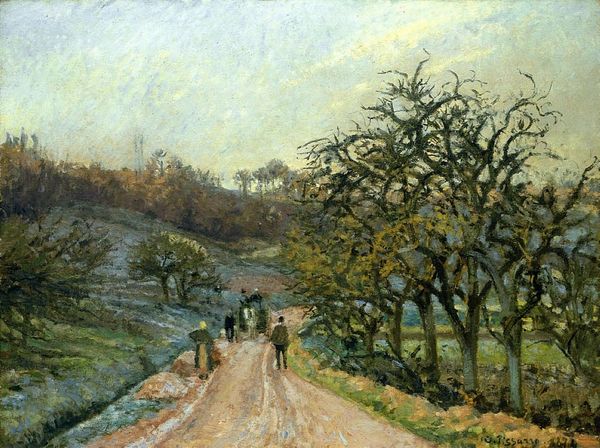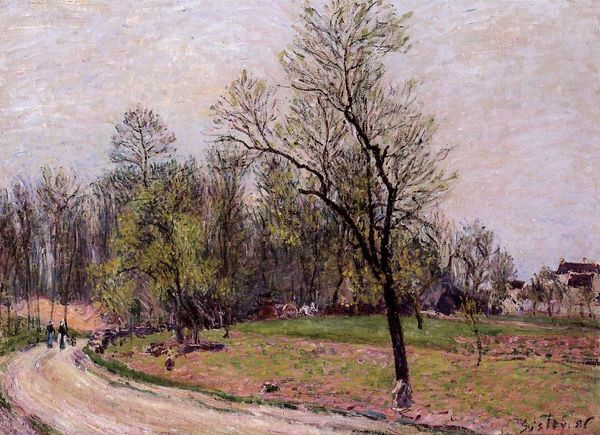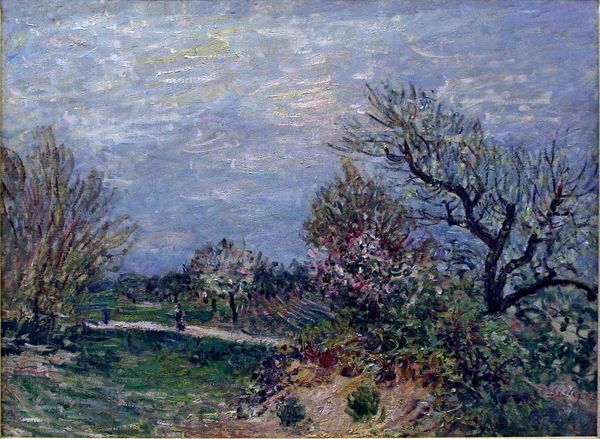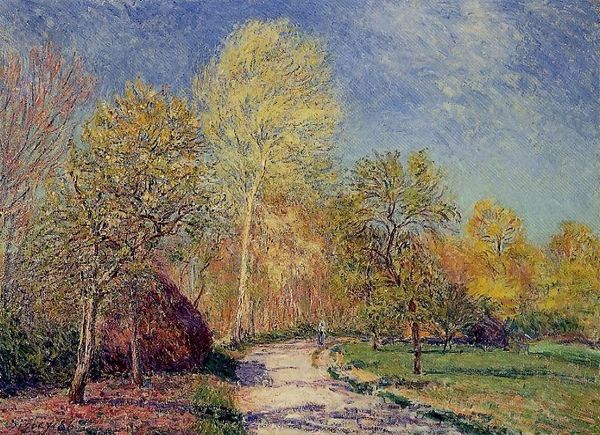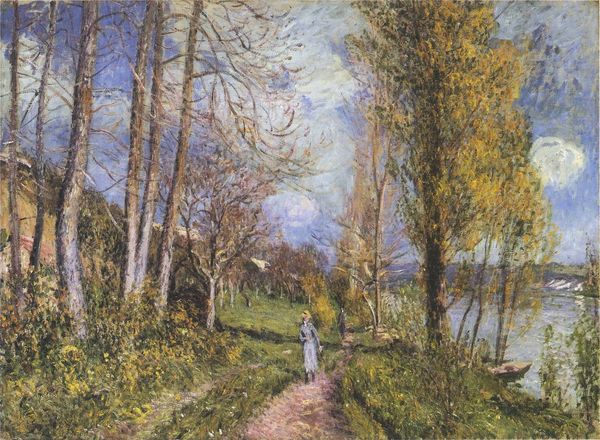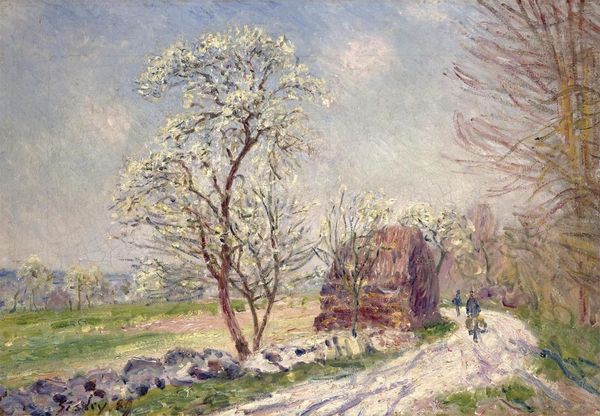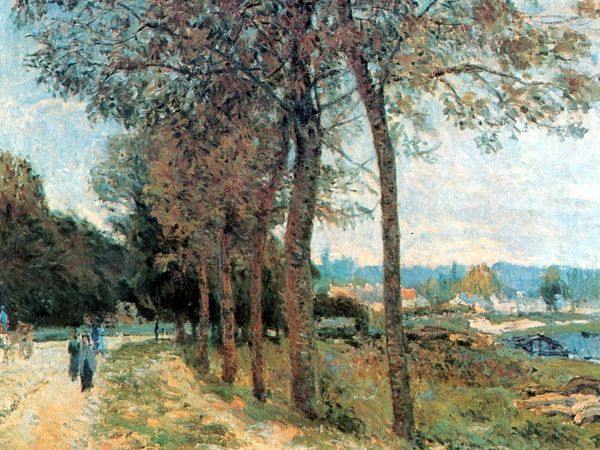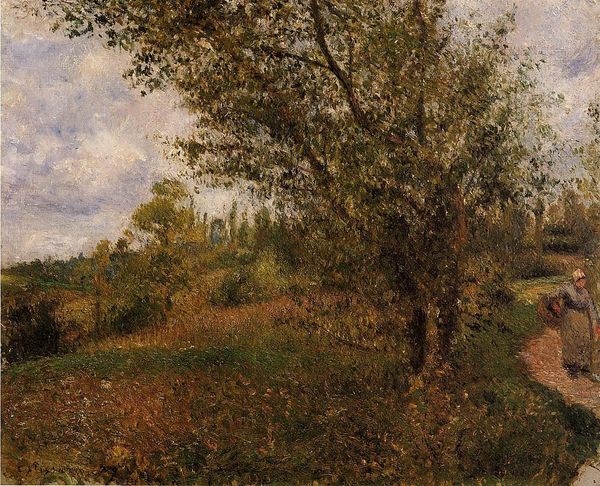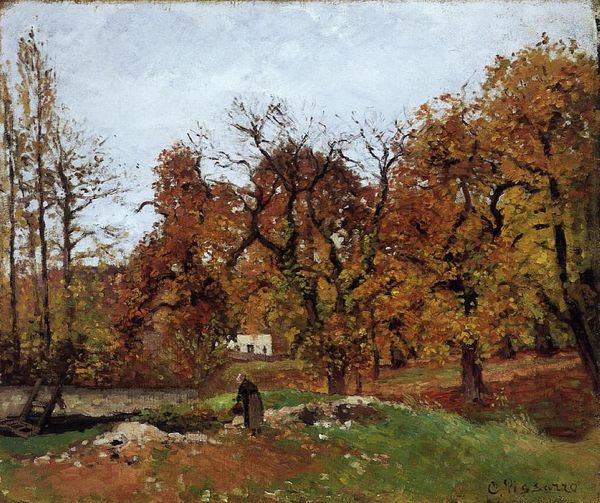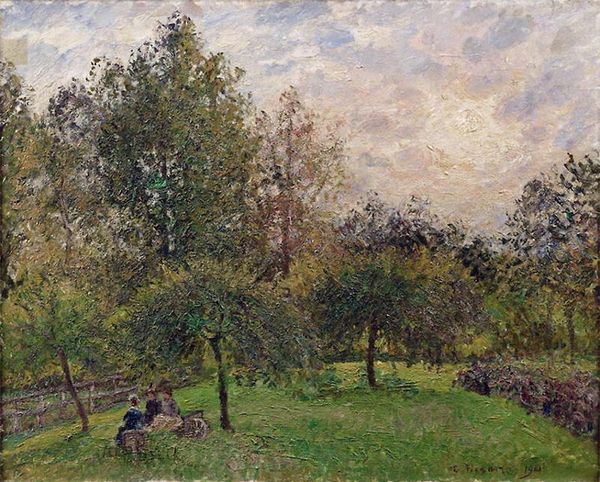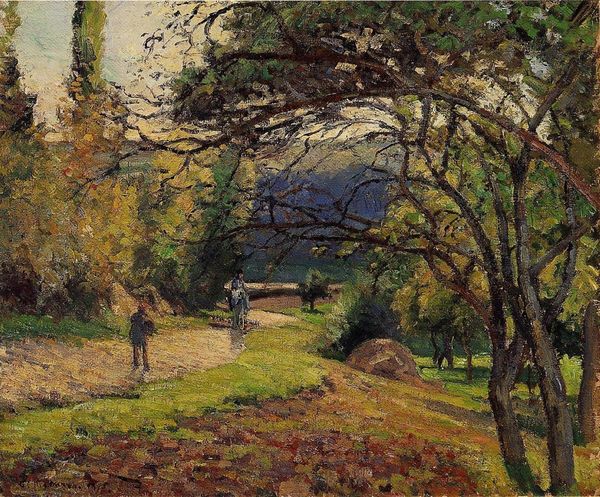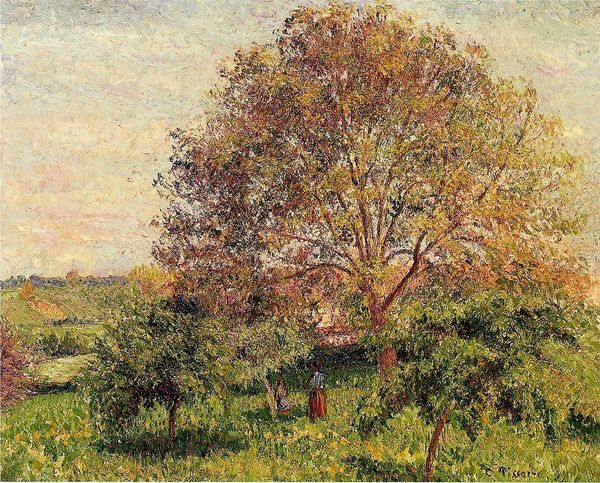
painting, plein-air, oil-paint
#
tree
#
sky
#
painting
#
impressionism
#
plein-air
#
oil-paint
#
landscape
#
impressionist landscape
#
figuration
#
oil painting
#
cityscape
Dimensions: 46 x 61 cm
Copyright: Public domain
Curator: Alfred Sisley's "A Road in Seine et Marne," painted in 1875, captures a serene moment in the French countryside using oil on canvas. Editor: The initial impression is rather melancholic, isn’t it? The subdued colors and almost barren trees evoke a sense of quiet contemplation, tinged with a slight desolation. Curator: I would say Sisley brilliantly orchestrates light and color here. Note how the pale sky filters down, illuminating the road and highlighting the structural form of the trees. His broken brushstrokes beautifully convey the transient nature of light, truly emblematic of Impressionism. Editor: Absolutely, but beyond the pure visuality, it reflects a period of social unrest in France, post Franco-Prussian War. These landscapes offered a retreat, almost an escape, from the urban anxieties, though the road itself suggests both connection and a potential path away from traditional societal norms. The figures seem deliberately anonymized, representing perhaps the universality of displacement. Curator: While I acknowledge the sociopolitical undercurrents, the painting's real power lies in its formal elements: the careful balance between the horizontal plane of the road and the verticality of the trees, and how Sisley utilizes the atmospheric perspective. It guides the viewer's eye deeper into the composition. Editor: It’s hard to divorce Sisley’s landscapes from their historical setting. The rising industrialization led to increased urbanization and feelings of alienation. A road like this isn’t merely a visual device; it signifies journeys, movement, and possibly the search for community in a changing world. We also can’t ignore the absence of industry; Sisley actively chooses a scene untouched by it. Curator: That's a valid point, but the formal rigor provides a necessary foundation to interpret possible narratives. Sisley presents a carefully structured world, irrespective of any social critique. Editor: Perhaps what strikes me most is that it’s precisely in that "structure" we find his comment. To find peace on a country road became an active protest, an occupation of beauty against the rapid disintegration of the familiar. It speaks volumes for an artist so committed to what one might overlook. Curator: A perspective well-noted.
Comments
No comments
Be the first to comment and join the conversation on the ultimate creative platform.

